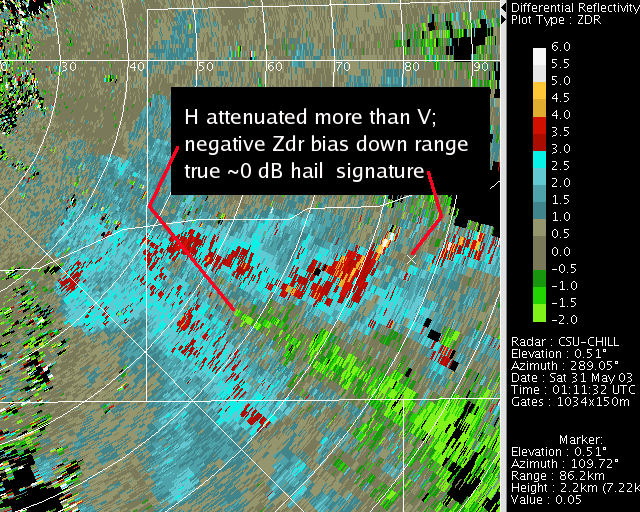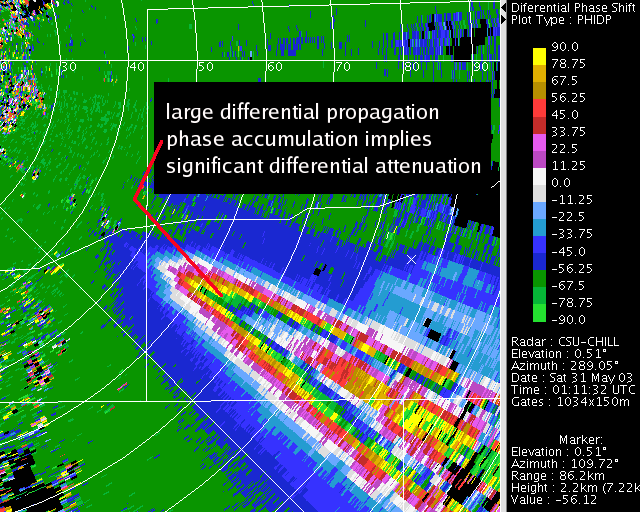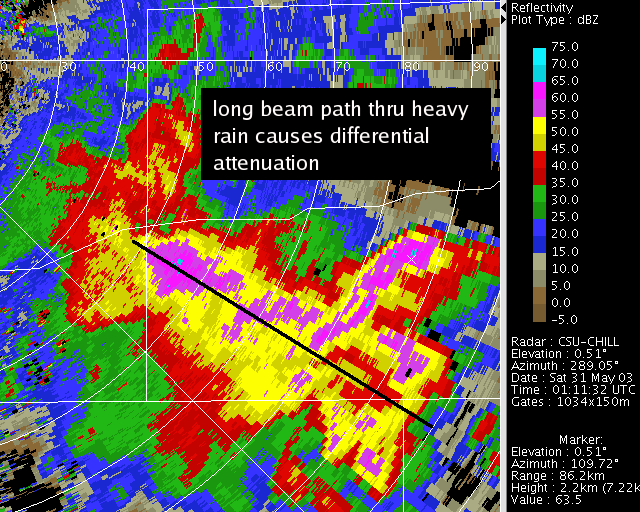Differential attenuation Zdr artifacts
For oblate raindrop shapes, the diameter encountered by a horizontally-polarized (H) radar pulse will exceed that sensed by a vertically polarized (V) pulse. The resultant H vs. V backscatter signal power level difference is the basis of differential reflectivity. A by-product of these oblate drop shapes is also a difference in the attenuation losses experienced by the two different polarizations. Differential attenuation becomes significant when the echo geometry causes large concentrations of oblate drops to exist along appreciable (many tens of km) range intervals of the beam path. The following 0.5° elevation PPI scan depicts such a situation
Reflectivity
Differential Reflectivity
The H polarized pulses experience more attenuation (weakening) than the V pulses as the radar waves propagate along beam paths that contain large concentrations of oblate drops. This preferential H signal reduction introduces a negative bias. This is shown by the reduced / negative "shadow" seen along the rain-filled beampath. Since low areas within thunderstorm rain areas are typically associated with hail, differential attenuation can exaggerate the size of polarimetrically-inferred hail regions.
Note: A correct indication of hail is seen in the ~0 dB area marked by the cursor (white X).

Differential Phase Shift
The same extensive, along-beam oblate drop concentrations that generate significant differential attenuation effects also cause appreciable accumulations of differential propagation phase shift. In the example shown here, folding occurs due to the large accumulation. Differential attenuation effects should be suspected when such large shifts develop. ( corrections for differential attenuation can be calculated based on the accumulation.)



